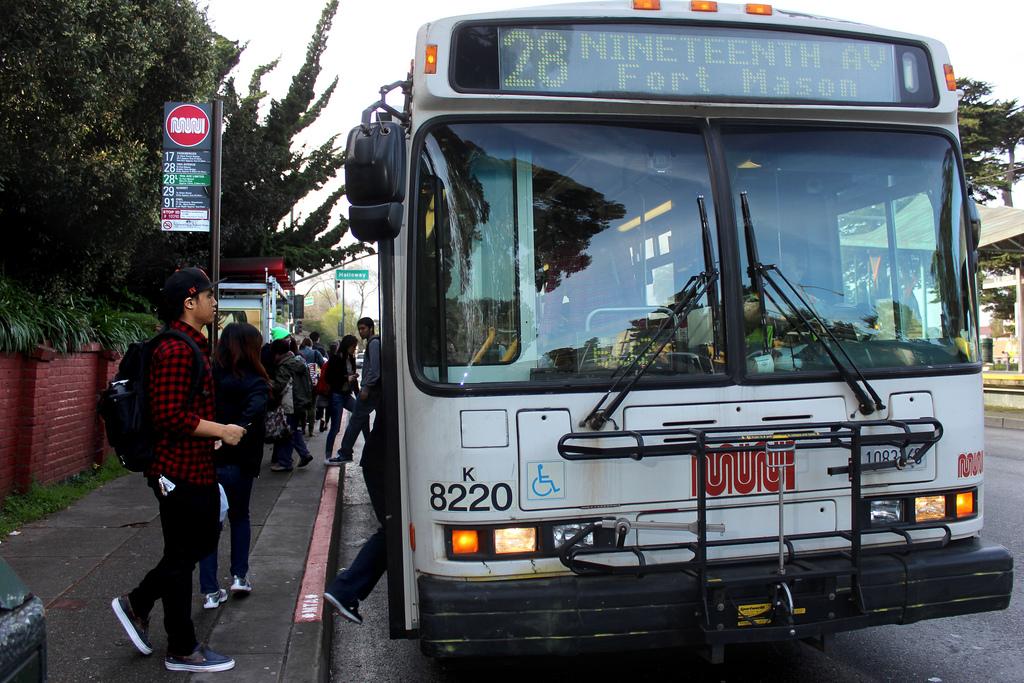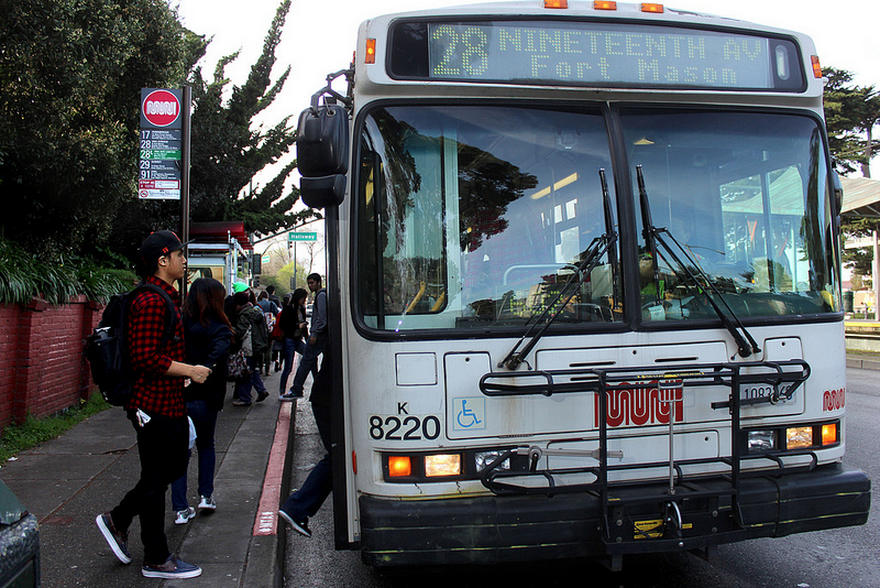 Sophomore Kinesology major Rodney Torres boards a 28 bus at the bus stop at the top of campus on 19th Avenue heading toward Fort Mason Monday, March 10. Photo by Tony Santos / Xpress
Sophomore Kinesology major Rodney Torres boards a 28 bus at the bus stop at the top of campus on 19th Avenue heading toward Fort Mason Monday, March 10. Photo by Tony Santos / Xpress
The SFMTA is making changes to the 28 and 28L bus lines, which they hope will increase speed and efficiency. Some students and faculty can expect an easier journey to class next semester.
Every day about 17,500 people ride the 28 or 28L during its route from the Daly City BART station to Fort Mason. High passenger demand and heavy traffic along 19th Ave. delay the 28 to an average speed of 9.9 mph and the 28L to 11.2 mph during peak hours, according to MUNI’s website. But beginning this summer, the 28 will no longer stop at every block. Instead, the bus will adopt the same route as the 28L.
According to SFMTA Service Planning Manager Jeff Flynn, more buses and more rapid transit time means improved service reliability and safer passenger loading and drop-off.
The 28 will stop at every other block between Lincoln Way and Juniperro Serra Blvd. The 28L will decrease passenger pick up and drop off to only major destinations and transfer points, including Judah St., Taraval St., Winston Dr. and Holloway Ave.
The SFMTA will move several bus stops on 19th Avenue to the far end of the intersection and reprogram traffic signals to hold a green light when a bus is approaching, allowing buses to pass through the intersection before pulling over.
Busses will also arrive every nine minutes instead of every 10 minutes, with the hope of increasing the 28’s average operating speed to 12.2 mph, and 12.7 mph for the 28L during peak hours.
Student riders, such as Devon Trunk are excited about the changes. “I have classes late at night” the dance major said, “I would like to see a bus come more than once every 20 minutes.”
MUNI’s changes to the 28, or the “19th Avenue Time Reduction Proposal,” is part of the “Transit Effectiveness Project,” SFMTA’s ongoing overhaul of San Francisco’s public transportation system.
The project aims to connect San Francisco’s neighborhoods by transporting more people on crosstown lines, like the 28, rather than downtown lines.
This is MUNI’s first improvement project in more than 30 years, but not everyone is happy with the changes.
“I think we should keep the 28 as it is now,” said Amy Huang, a business and marketing major, who rides the bus to class every day from Geary Blvd. “Skipping every other block would cause more crowding at major bus stops.”
SFMTA also plans to ease the 29 bus’ midday congestion caused by AP Giannini Middle School and Lakeshore Alternative Elementary students, according to Flynn.
The agency will hold a community feedback meeting regarding the 19th Ave. Time Reduction Proposal at SF State in April. The date has yet to be determined.





